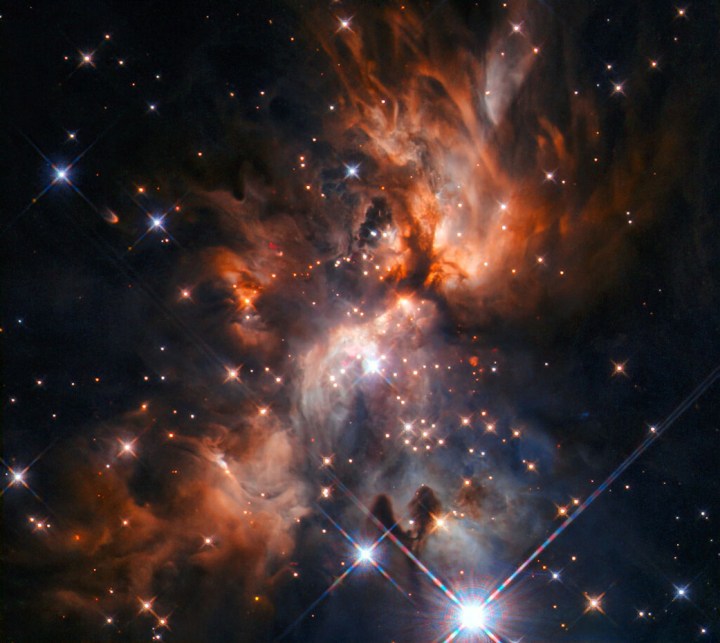
Although it recently had a scare with some faulty computer hardware, the Hubble Space Telescope is now back up and running with its normal science operations. That means we can look forward to many more breathtaking images of space captured by this venerable telescope, like the one above recently shared by NASA.
This image shows the nebula AFGL 5180, a cloud of dust located in the constellation of Gemini (the Twins), which acts as the birthplace for new stars. A huge star is being born in the center of this image, sending out jets that disrupt the dust and gas above and below it.
Stars are born when clouds of dust like this one begin to form clumps. As more dust and gas are attracted to the clumps due to gravity, they begin to grow. Eventually, the clumps grow so large and dense that they collapse into stars. From start to finish, for a star to develop from a cloud of dust to a shining beacon, like our sun, the process takes around one million years.
Regions of relatively thick dust are essential for star formation, like this nebula. However, the dust that powers the birth of stars can be a problem for astronomers here on Earth. “Stars are born in dusty environments, and although this dust makes for spectacular images, it can prevent astronomers from seeing stars embedded in it,” Hubble scientists write. “Hubble’s Wide Field Camera 3 (WFC3) instrument is designed to capture detailed images in both visible and infrared light, meaning that the young stars hidden in vast star-forming regions like AFGL 5180 can be seen much more clearly.”
Using infrared allows astronomers to peer through the dusty veil and see what lies beneath. A similar approach has been used to peer through the clouds of Jupiter in our solar system or to see the movement of gas at the center of our galaxy.



